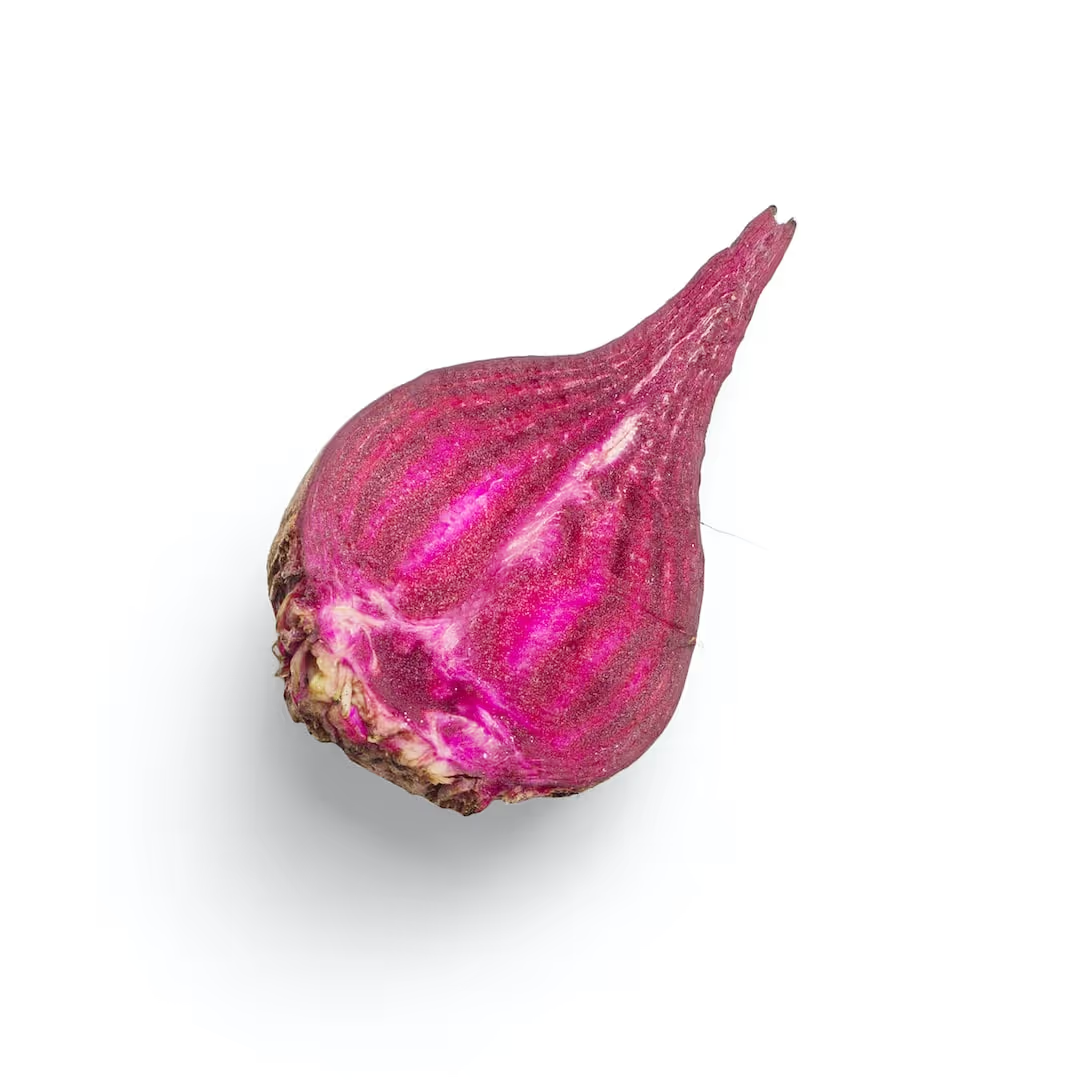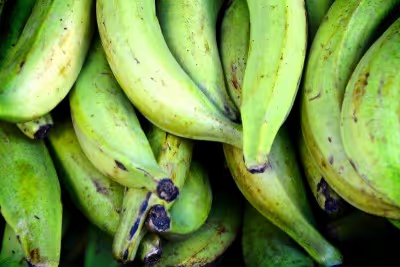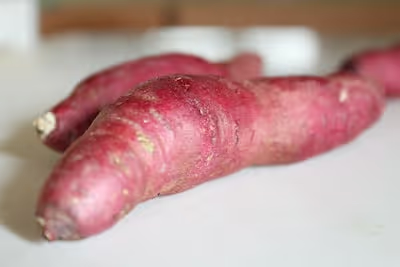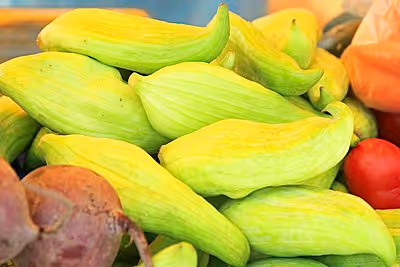Growing Beetroot: Your Simple Step-by-Step Planting Guide

Growing Beetroot
Growing beetroot rewards gardeners with vibrant roots and nutrient-rich greens in just 8-10 weeks. Plant beet seeds directly into loose, fertile soil in early spring or late summer, spacing each seed about three inches apart. Water regularly and thin seedlings to encourage healthy root development—ready to harvest delicious, earthy beets from your own backyard? Here's your straightforward, step-by-step guide.
Cheatsheet: Step-by-Step Beetroot Growing Guide
🌱 Soil & Location
- pH: 6.0–7.5
- Sun: 6+ hrs direct
- Loose, fertile, well-drained soil
- Add compost before sowing
🗓️ Planting Time
- Soil temp: 50–77°F (10–25°C)
- Start 2–4 weeks before last frost
🛠️ Tools and Products You'll Need
- Hand trowel
- Rake
- Watering can or hose
- Row marker or string
- Beetroot seeds
- Compost
- Mulch (optional)
👩🌾 Steps
- Sow seeds 1/2 in (1.2 cm) deep, 2 in (5 cm) apart, rows 12 in (30 cm) apart
- Thin seedlings to 4 in (10 cm) apart after sprouting
- Keep soil moist, not soggy
- Mulch to suppress weeds, conserve moisture
- Feed with organic fertilizer after 4 weeks
- Harvest when roots reach golf ball size (about 50–70 days)
💧 Care Tips
- Water: 1 in (2.5 cm) per week
- Avoid overhead watering to prevent disease
- Remove weeds quickly—beetroot hates root disturbance
🥗 Nutrition & Uses
- Rich in folate, fiber, iron
- Roots & leaves edible
- One cup contains 37% RDA of folate
- Boosts self-sufficiency—high yield per m²
-
Growing Beetroot: Your Simple Step-by-Step Planting Guide
I grow beets for their swagger as much as their sweetness. They pull sugar from the underworld and still taste clean if you treat the soil right.
Key facts that shape success
"Beet seeds are actually multigerm seedballs, so expect several seedlings from each 'seed'." Johnny’s Selected Seeds
Germination hums at 50 to 85 F, or 10 to 29 C. Most garden varieties mature in 50 to 70 days, faster in warm soil.
"Sow little and often from March to July for a continuous crop." Royal Horticultural Society
Ideal soil pH lands between 6.0 and 7.5, which keeps flavor bright and scab in check. One 30 meter row can yield 14 to 23 kilos, or 30 to 50 pounds, under home garden conditions according to multiple U.S. extension guides.
Step 1. Prepare the bed like a pro
Aerate the top 6 inches, or 15 cm, and sift out stones that distort roots. I spread 1 inch, or 2.5 cm, of finished compost and a light application of a low nitrogen, higher potassium fertilizer such as 5-10-10 at label rate.
Skip fresh manure which pushes leafy growth and earthy off-flavors. If your soil runs sandy, blend in some well-aged leaf mold to hold moisture without clumping.
"Beets prefer a light, well-drained soil in full sun." Royal Horticultural Society
Step 2. Timing and temperature
Direct sow as soon as soil is workable and at least 45 F, or 7 C, which is late winter to early spring in mild climates and mid spring in cold ones. Autumn sowing works 6 to 8 weeks before first frost for tender baby beets.
I succession sow every 2 to 3 weeks until midsummer for steady roots. Heat above 85 F, or 29 C, slows germination, so shade cloth helps in hot spells.
Step 3. Spacing that yields uniform bulbs
Sow 0.5 inch deep, or 1.3 cm. Keep rows 12 inches apart, or 30 cm, or plant in two parallel lines 6 inches, or 15 cm, apart on a 30 inch, or 75 cm, bed for efficient weeding.
Thin to one plant every 2 inches, or 5 cm, for golf ball roots. Go to 3 inches, or 7.5 cm, for full-size bulbs with tender texture.
Step 4. Smart seed handling
Pre-soak seedballs 4 to 12 hours to soften the corky hull. I rub them gently between two sheets of sandpaper for faster sprouting, then sow into pre-watered drills.
Seed tape saves time for straight rows, and it helps new growers achieve consistent spacing. In dry regions, lay drip tape 2 inches, or 5 cm, off the row to keep moisture steady.
Step 5. Water like flavor depends on it
It does. Aim for 1 inch, or 25 mm, per week, and keep soil evenly moist to prevent woody rings and zoning.
A 1 inch, or 2.5 cm, layer of straw or shredded leaves reduces swings in soil moisture. I avoid overhead watering after thinning which limits foliar disease.
Step 6. Feeding and micronutrients
Beets dislike excess nitrogen, so skip frequent high-N feeds that give you baseball tops and marble roots. Side-dress lightly with a potassium-forward organic fertilizer when roots are marble-sized.
Boron deficiency shows as black, corky centers. If a soil test flags low boron, use a labeled boron supplement sparingly and only once, because too much burns.
Step 7. Thinning without waste
I snip extras at soil level to avoid root disturbance, then eat the trimmings like microgreens. If you prefer pulling, water first so remaining seedlings don’t loosen.
Step 8. Pest and disease playbook
Flea beetles pockmark greens early, so I set lightweight row cover at sowing and remove after plants toughen. Slugs chew seedlings in damp springs, so I use beer traps and early morning patrols.
Leaf miners tunnel through leaves; remove affected leaves fast before larvae pupate. For foliar spots like Cercospora, rotate 3 years, avoid overhead irrigation, and widen spacing for airflow.
"Ideal pH for beets is 6.0 to 7.5." University of Minnesota Extension
Harvest cues and storage
Pull baby roots at 1.5 inches, or 4 cm, and standards at 2.5 to 3 inches, or 6 to 7.5 cm, while texture stays tender. Twist off tops leaving a 1 inch, or 2.5 cm, stem so they do not bleed.
Store unwashed roots in a perforated bag at 32 to 40 F, or 0 to 4 C, for 2 to 3 months with high humidity. Greens keep 3 to 5 days in the fridge and shine sautéed with garlic.
Varieties I trust for Growing Beetroot
- ‘Boltardy’ early, bolt tolerant, smooth flavor, 50 to 60 days.
- ‘Detroit Dark Red’ classic globe, reliable color and storage, 60 days.
- ‘Pablo F1’ uniform sizing, sweet even when larger, strong tops.
- ‘Cylindra’ elongated roots for easy slicing and pickling, 60 days.
- ‘Chioggia’ candy-stripe rings, mild and quick, best small to medium.
- ‘Touchstone Gold’ golden flesh, low staining, tender greens.
- ‘Avalanche’ white beet, very sweet, clean flavor for raw salads.
Container and small-space setup
Pick a pot at least 10 inches deep, or 25 cm, with a volume of 15 liters, or 4 gallons, for a dozen beets. Use a peat-free mix with 20 percent compost and water consistently since pots dry fast.
Space 3 inches, or 7.5 cm, apart in a grid. A self-watering container smooths moisture swings and prevents woody rings.
Companions and rotation
I pair beets with onions, lettuce, and brassicas for clean spacing. Avoid planting after spinach or chard since they share pests and disease.
Rotate beet beds on a 3 to 4 year cycle to break leaf spot and scab. Keep beds weed-light because beets hate early competition.
From bed to plate
Roast whole with skins on at 400 F, or 205 C, until a knife slips in. Slip skins, salt with flaky crystals, and finish with red wine vinegar.
Pickle sliced ‘Cylindra’ for sandwiches, and ferment a small batch for earthy-lively beet kvass. Beet greens sauté like chard and taste sweeter.
Buyer’s guide for Growing Beetroot
- Seeds: choose bolt tolerant cultivars for spring sowing and uniform hybrids for tight spacing.
- Seed tape: worth it for straight, even rows and less thinning.
- Row cover: 0.5 to 0.6 oz, or 17 to 20 g, fabric to block flea beetles and warm spring soil.
- Drip line or soaker hose: keeps foliage dry and roots even.
- Soil test kit: verify pH and boron status before guessing.
- Stirrup hoe or wire weeder: fast early weed control without soil toss.
Common mistakes I used to make
- Letting the seedbed crust after sowing which stalls germination.
- Skipping thinning which creates twisted, undersized roots.
- Using fresh manure which feeds leaves at the expense of flavor.
- Overwatering in heavy soil which invites scab and rot.
- Sowing too deep which slows emergence and reduces stand.
- Waiting too long to harvest which gives you pithy centers.
Anecdotes from the rows
The sweetest beets I have grown came after a cool spring where soil sat near 55 F, or 13 C, and I watered like a metronome. The toughest ones happened during a windy heat spell until I threw shade cloth over the bed and everything steadied in two days.
I have split seedballs and sown the halves for more uniform single plants. It feels fussy but delivers even rows and fewer thins.
Interesting side notes for Growing Beetroot nerds
- Beets tolerate slight salinity better than many greens, so they produce near coastal soils where lettuce sulks.
- Greens carry more iron and vitamin K per gram than roots, and they cook faster than spinach.
- Uniform moisture reduces concentric white zoning in red beets, which is a water stress marker, not poor variety.
Helpful stats and references
"Harvest within about 12 weeks of sowing in summer conditions." Royal Horticultural Society
"Beets germinate best in warm soils but will germinate at 40 F, or 4 C." University of Minnesota Extension
"Expect 30 to 50 pounds of beets per 100 feet of row." Multiple U.S. Extension sources including University of Illinois Extension
I rely on the Royal Horticultural Society for calendar timing, and university extension bulletins for spacing and fertility. Field notes and tastings over many seasons refine the details that make Growing Beetroot feel effortless.
Frequently Asked Questions About Growing Beetroot
What type of soil helps beetroot thrive?
Beetroot grows best in well-draining, fertile soil enriched with organic matter. Aim for a soil pH between 6.0 and 7.0 to encourage healthy root development and vibrant growth.
How much sunlight does beetroot require?
Beetroot plants prefer full sun, receiving at least 6 to 8 hours of direct sunlight daily. Adequate sunlight promotes vigorous growth and sweeter roots.
How often should beetroot be watered?
Provide beetroot with consistent moisture by watering deeply once a week, ensuring about 1 inch (2.5 cm) of water per session. Keep soil evenly moist but avoid waterlogging to prevent root decay.
When can I harvest beetroot?
Typically, beetroot becomes ready for harvest within 50 to 70 days after planting. Harvest roots once they reach about 2 to 3 inches (5 to 7.5 cm) in diameter for ideal tenderness and flavor.
What causes beetroot leaves to yellow and wilt?
Yellowing and wilting beetroot foliage often results from overwatering, insufficient drainage, or pest infestations like leaf miners. Allow soil to moderately dry between waterings and regularly inspect plants for pests.
Can beetroot be grown successfully in containers?
Absolutely—beetroot adapts well to container gardening. Select containers at least 10 inches (25 cm) deep and ensure ample drainage holes. Fill with fertile, loamy soil and maintain consistent watering for optimal growth.
What companion plants benefit beetroot growth?
Consider planting beetroot alongside beneficial companion plants like onions, garlic, lettuce, and bush beans. These companions can repel pests, enrich soil nutrients, and encourage healthy development.
Growing beetroot rewards you with more than just vibrant roots; you get a harvest that’s packed with flavor and nutrition. Start with loose, fertile soil, sow your seeds at the right depth, and keep everything moist but not soggy. Don’t ignore thinning—crowded plants lead to puny beets. A steady hand with the watering can and some patience are all it takes. Pull them fresh, and you’ll taste the earth’s honesty in every bite. If you’re hooked on homegrown produce, you might also like growing lettuce at home for a perfect salad companion. With just a little attention, growing beetroot can turn any patch of dirt into something extraordinary.
The Prepper's Guide to Reliable Beetroot Cultivation
Select Nutrient-Dense Varieties
- Detroit Dark Red: hardy heirloom, stores up to 6 months.
- Cylindra: elongated root, efficient slicing, excellent canning yield.
- Chioggia: rapid grower, matures within 55 days, versatile raw or cooked.
Long-Term Beetroot Seed Storage
Dry beetroot seeds to 8% moisture; vacuum seal with oxygen absorbers; store at temperatures of 40°F–50°F (4°C–10°C). Proper methods preserve seed viability for up to 5 years.
Essential Nutritional Profile
- High in nitrates—supports circulatory function during food scarcity.
- Contains folate, manganese, potassium; critical vitamins for sustained health.
- Beet greens—rich in iron, calcium; viable leafy resource in limited diets.
Reliable Preservation Techniques
- Pickling: vinegar-brine solution extends shelf life over 1 year without refrigeration.
- Dehydration: slice thinly, dry at 130°F (54°C) for 6 hours until crisp; store sealed for compact, nutrient-rich emergency rations.
- Root Cellaring: pack in damp sand, maintain temperature at 32°F–40°F (0°C–4°C) with 85%–90% humidity; keeps beetroot viable 3–5 months.
Effective Companion Planting
- Onions & Garlic: deter pests, boost beetroot yield.
- Bush Beans: fix nitrogen, sustain prolonged soil fertility.
- Borage: attracts beneficial pollinators, minimizes beet pest populations naturally.
Find out which plants will thrive in your garden!
Answer a few fun questions and get custom plant recommendations perfect for your space. Let’s grow something amazing together!

start your season





